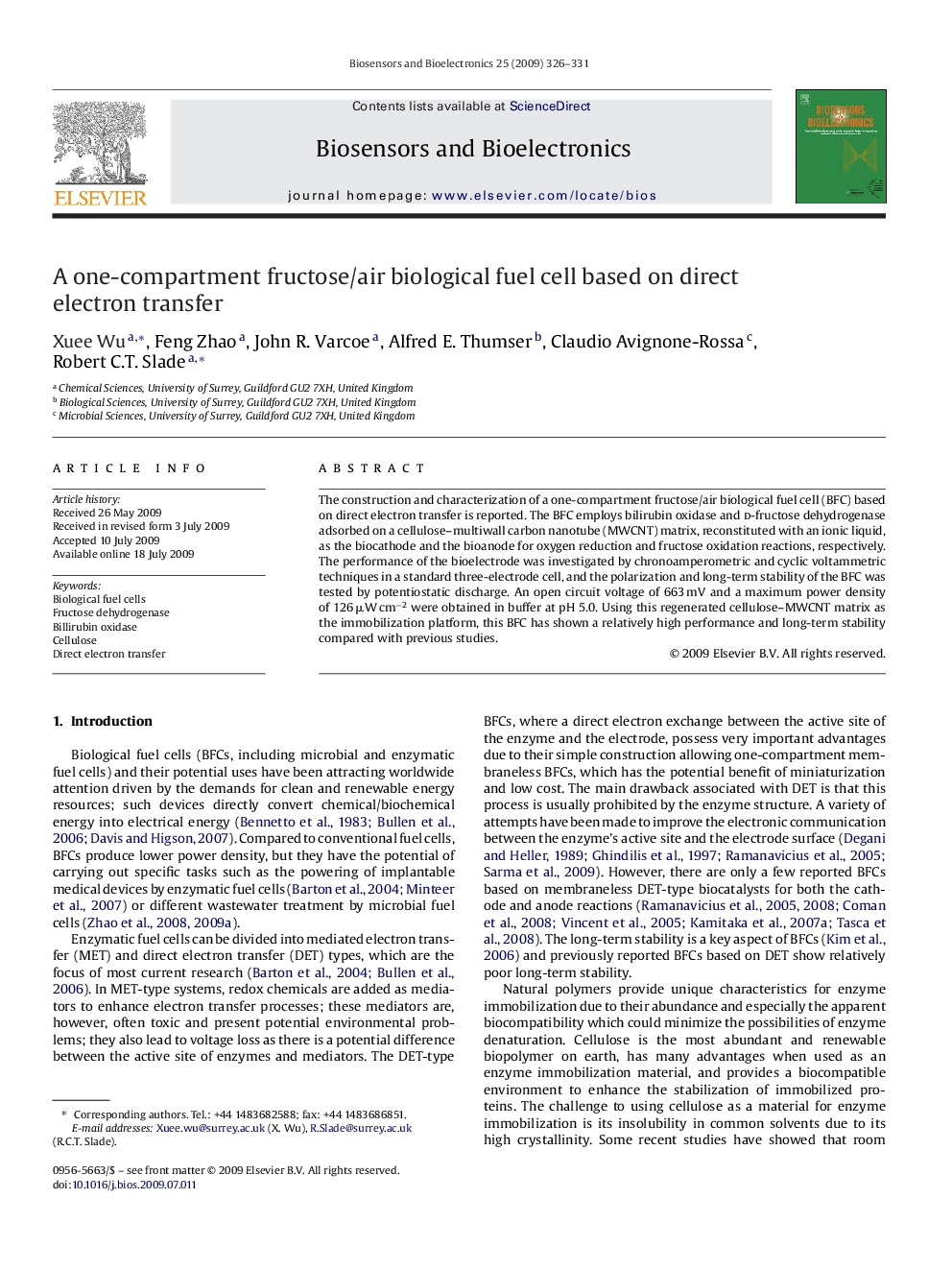| Article ID | Journal | Published Year | Pages | File Type |
|---|---|---|---|---|
| 869017 | Biosensors and Bioelectronics | 2009 | 6 Pages |
The construction and characterization of a one-compartment fructose/air biological fuel cell (BFC) based on direct electron transfer is reported. The BFC employs bilirubin oxidase and d-fructose dehydrogenase adsorbed on a cellulose–multiwall carbon nanotube (MWCNT) matrix, reconstituted with an ionic liquid, as the biocathode and the bioanode for oxygen reduction and fructose oxidation reactions, respectively. The performance of the bioelectrode was investigated by chronoamperometric and cyclic voltammetric techniques in a standard three-electrode cell, and the polarization and long-term stability of the BFC was tested by potentiostatic discharge. An open circuit voltage of 663 mV and a maximum power density of 126 μW cm−2 were obtained in buffer at pH 5.0. Using this regenerated cellulose–MWCNT matrix as the immobilization platform, this BFC has shown a relatively high performance and long-term stability compared with previous studies.
